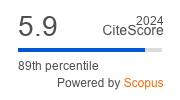Article | Open Access
Securing the Future of UK Public-Interest News: Navigating Change With Foresight and Innovation
| Views: | 1253 | | | Downloads: | 1132 |
Abstract: This article delves into the factors driving change in the UK’s public-interest news sector, pinpointing key uncertainties that shape its future. Through a participatory action research approach and scenario planning, the study News Futures 2035, seeks to answer the pivotal question: How can the UK ensure the ongoing supply of trustworthy, public-interest news? It stands out for its unique focus, enriching the debate among industry, academia, policymakers, and civil society on safeguarding the sector’s future. The research identified two primary, unpredictable elements with significant influence: the realm of policies, regulations, and governance; and the industry’s capacity for innovation to maintain the relevance of public-interest news for all stakeholders. The study highlights the indispensable role of collaborative action research and continuous dialogue among key stakeholders. It emphasizes the need for structured, cooperative efforts to navigate the complexities of policy, regulation, and consumer relevance, introducing the concept of back-channel deliberations, akin to track 2 diplomacy, as a valuable strategy for engaging diverse stakeholders in informal yet structured discussions. This method promises to foster a platform for innovative solutions and mutual understanding, addressing the challenges to the future supply of public-interest news. The participants’ commitment to advancing this dialogue through a dedicated forum underlines the importance of ongoing stakeholder engagement to ensure the sector’s relevance, sustainability, and societal impact.
Keywords: action research; foresight; news innovation; public-interest news; track 2 diplomacy; trust in news
Published:
© François Nel, Kamila Rymajdo. This is an open access article distributed under the terms of the Creative Commons Attribution 4.0 license (http://creativecommons.org/licenses/by/4.0), which permits any use, distribution, and reproduction of the work without further permission provided the original author(s) and source are credited.


